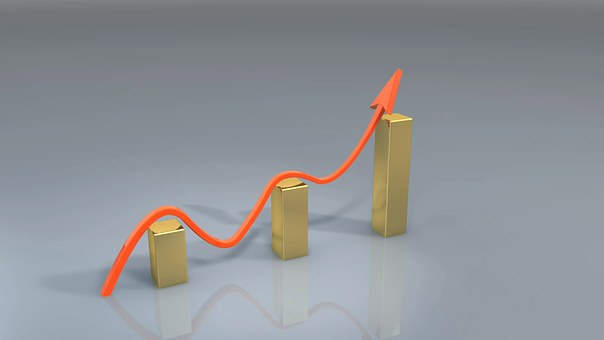Best CD Rates Today | National High Yield CDs
Many Americans struggle with building up their savings accounts. In fact, according to a 2016 GoBankingRates survey, 69 percent have less than $1,000 in their savings accounts.
This might not pose much of a problem for day-to-day finances, but when it comes to the big picture establishing a solid savings account is crucial.
Whether you’re planning on buying a house, moving to another state, purchasing a car, or retiring, having a savings account to fall back on makes managing long-term finances much easier.
One option for enhancing your savings is a certificate of deposit (CD), a savings product that provides an easy, safe place for your money to grow.
Related:
- Best 1-Year, 2-Year, 5-Year, and Jumbo CDs in Ohio
- Best CD Rates in PA | Pittsburgh, Philadelphia…
- Best CD Deals in Houston and Dallas, TX
- Florida CD Rates
- Texas CD Rates and Accounts
- Best CD Rates in California
- Best CD Offers in NY
What is a CD?
A certificate of deposit (CD) is an alternative savings product that offers higher return rates than a traditional savings account.
Not only do they offer higher returns, but they also come with the benefits of stability and low—if any—monthly fees.
Investing in a CD today is a good option for short-term savings goals, since CDs are available in term lengths of 1-60 months.
Depending on the financial institution, there will be varying minimum deposits for each CD term. For example, a list of CD rates and terms from GoBankingRates shows minimum deposits ranging from $0-$2,500.
Because today’s CDs have a wide variety of term lengths, interest yields, and deposit requirements, they are one of the more flexible savings options available on the market today.
Different Types of CDs Today
While most CDs today come with fixed yields and terms, you may find that your financial institution allows for a few different options, including:
- Variable-rate CD
- Low/No penalty for early withdrawal CD
- Callable CD
- Jumbo CD
- IRA CD
Depending on your needs and your personal finances, you may find that one of the above CDs is a better fit than a traditional CD.
For example, choosing a CD that doesn’t impose penalty fees for early withdrawals provides peace of mind for those worrying about tying up their money in savings funds.
Using the CD Ladder Method to Find the Best CD Rates Today
Although CDs have the benefit of providing your savings with a reliable place to grow, there are a few disadvantages.
First, they don’t exactly provide rapid returns—as seen in the table above, most CD rates hover around 2 percent and under, meaning that your savings will grow incrementally.
Second, they don’t provide a lot of liquidity, meaning that most CDs will impose penalty fees for early withdrawals of funds.
To solve these issues, many investors choose to employ the CD ladder method, which involves investing in multiple CDs with staggered end dates. With the ladder method, your savings will always be growing, and you will be able to withdraw funds each year if need be.
Here’s an example of what a traditional CD ladder looks like, as reported by NerdWallet:
- $2,000 in a 12-month CD
- $2,000 in a 24-month CD
- $2,000 in a 36-month CD
- $2,000 in a 48-month CD
- $2,000 in a 60-month CD
The best way to make a CD ladder work for you is to continually reinvest your savings after each CD has matured. For example, after the 12-month CD has expired, you can take your savings and purchase a new 60-month CD.
Similarly, after your 24-month CD has matured, you can take the resulting income and apply it towards another new 60-month CD.
The basic idea is to end with all 60-month CDs, allowing for the maximum amount of growth. What makes a CD ladder profitable is that each individual $2,000 piece gets a chance to benefit from additional yields before being converted into a 60-month CD, adding to your overall savings.
A CD ladder is a popular way for investors to make the most out of their savings– but if you are considering utilizing this method, make sure you are able to set aside your money for an extended period of time, as CDs are often not as liquid as an MMA or high-yield savings account.
If you are interested in learning more about current financial rates, check out the rate table at the top for a list of financial offers and products from leading financial institutions.
Should You Invest in a CD Today?
While CDs may not provide exponential growth, they are a reliable way to let your savings grow in the background.
If you have patience—and are interested in trying out a CD ladder—then this could be a great savings account for you to consider.
Keep in mind that, in most cases, you won’t be able to withdraw funds from a CD until the account has matured, which may cause a problem for investors that want liquidity.
At the same time, however, a CD is an ideal option for those who struggle with depleting their savings accounts before they have a chance to grow.
Consider your financial goals, your current savings plan, and the best CD rates to determine whether investing in a CD is the right decision for you.
CD, Savings and MMA Rate Table Disclaimer
Click here to read AdvisoryHQ’s disclaimer on the rate table(s) displayed on this page.
AdvisoryHQ (AHQ) Disclaimer: Reasonable efforts have been made by AdvisoryHQ to present accurate information, however all info is presented without warranty. Review AdvisoryHQ’s Terms for details. Also review each firm’s site for the most updated data, rates and info. Note: Firms and products, including the one(s) reviewed above, may be AdvisoryHQ's affiliates. Click to view AdvisoryHQ's advertiser disclosures.



